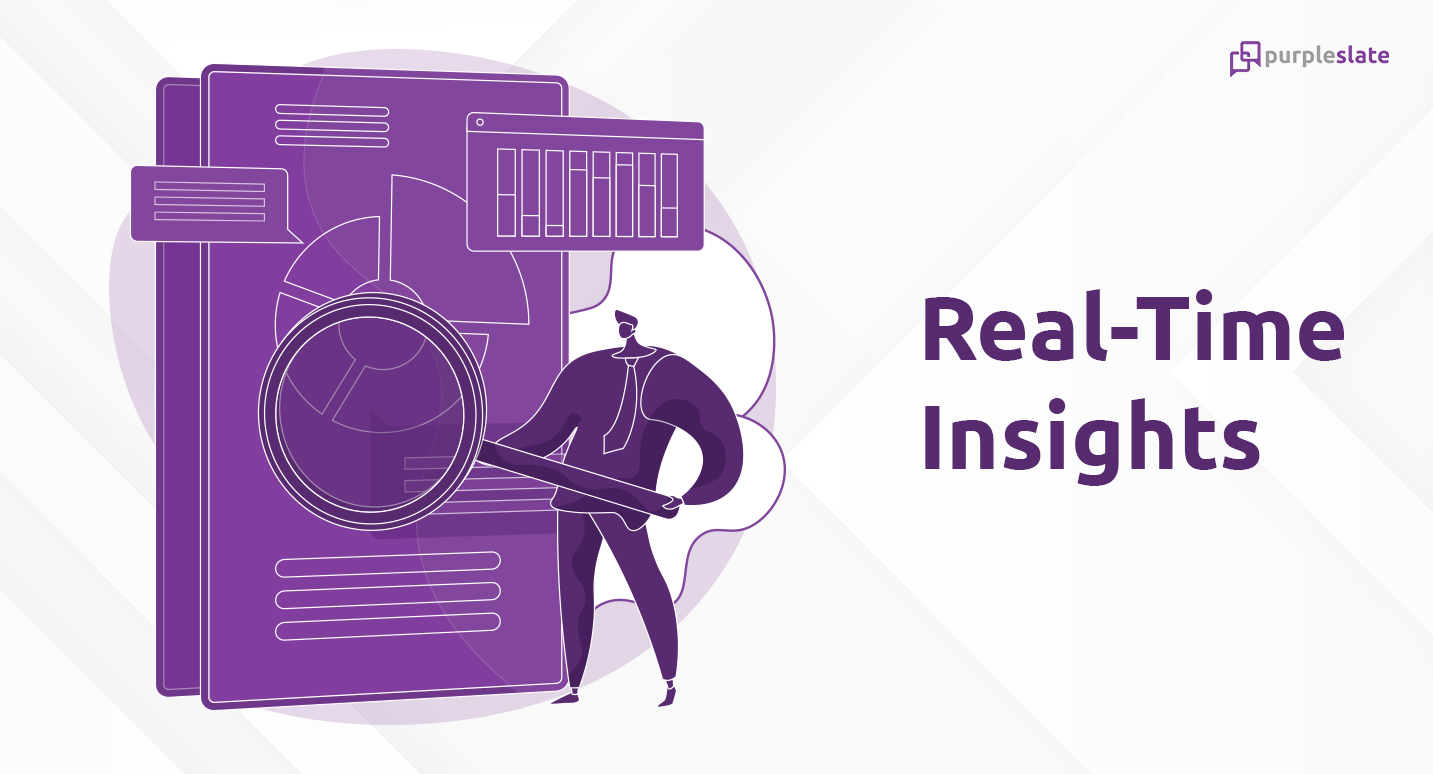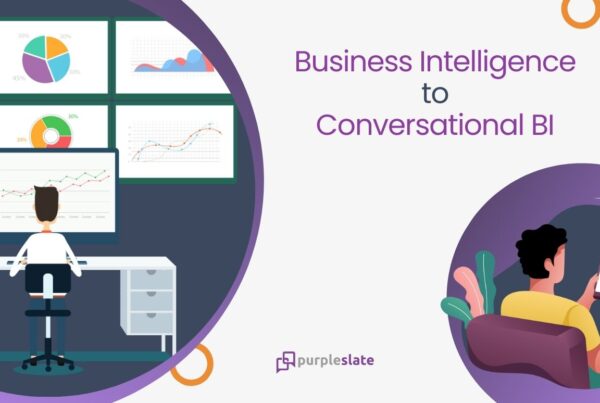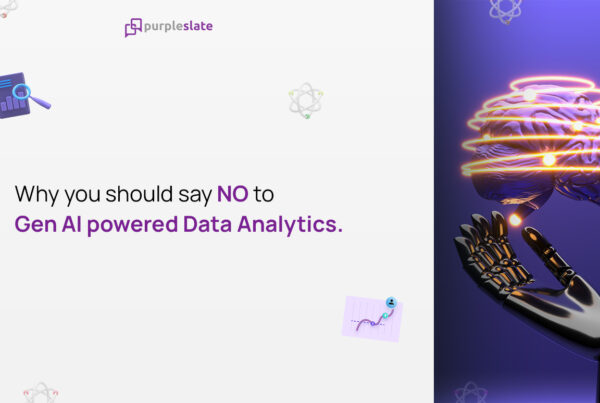
Introduction
The alarm goes off at 6:00 AM. Should I get up from the bed or snooze the alarm for another 5 minutes? That’s a typical early morning first decision any normal human makes. Research shows that a normal human typically makes around 30k informed decisions in a day on the go. What does it have to do with Real-time Insights?
Well, here is a real-life example. Our brain analyses incoming information in real-time to make informed decisions. At times it is a conscious decision, at times it is done unconsciously.
The world is fastly moving towards real-time data processing and analytics, that provide instant insights or real-time insights as it is interchangeably used in this blog. Before delving deeper, let us be clear on what is data, analytics and insights.
Data is the raw information that is sourced from users. Analytics is the discovery of patterns and trends from the data and Insight is the value obtained through the use of analytics.
Real-time insights are obtained from real-time analytics, where it is possible to immediately process and query new data as and when it is created. It will help to make informed decisions at the very moment and guide critical decision-making for the business.
There is an expiry date attached to everything in the universe. It applies to data as well. The moment data enters into any datastore after ETL or ELT, it has already lost 60% of its core value, be it monetary, business, statutory or regulatory. If it takes days for an enterprise to get insight after the origination of data, then it is already in the process of losing the game. This is a wake-up call.
At the most basic level, the data strategy for any organization will be to get the fastest possible time to insight. The more real-time the data is, it will empower the enterprise for making faster and better decisions than its competitors. The real value of data and analytics not only lies in their ability to deliver rich insights but also in providing instant or real-time insights.
Predictive marketing tools help in delivering instant insights by showing which users are likely to churn or convert in the future based on real-time data. These predictive insights can then be used by brands to drive conversions and proactively prevent churn.
Real-time insight means the analytics is completed within a few seconds or minutes after the arrival of new data and thereby the light bulb moment or insight is derived instantly.
While many companies are changing their infrastructure to meet the real-time demands of business, there are still many companies that operate on historical data analyzed in batches—meaning they can’t get instant insights. Their capacity to compete, comprehend client trends, and quickly respond to market developments can all be significantly impacted by this.
Real-time Insights – Blueprint
To get insights, data has to travel from data source to data transformation to analytical database. Analytical tools are run against the database to get trends and patterns and the result will be data visualizations or insights. To derive insights, data must be moved through each layer of the stack, from the source database to the visualization layer. Valuable time and context are lost every step of the way. Moving data is costly and challenging. The less we fiddle with data, the faster we’ll get insight.
Analytics can be conducted against source data models by leaving the data in the source database rather than constantly moving it around. The time it takes to get insight greatly decreases, and the data transformation process is drastically sped up. Additionally, it delivers brand-new user experiences that were previously unfathomable. But it requires huge investment in infrastructure and change in data strategy.
For enabling real-time insights, we need real-time analytics for data to be immediately gathered and accessible. This enables quick modifications, enhancements, and compensations for data obtained from real-time web and mobile apps, enabling you to fix mistakes and take advantage of new opportunities.
With this kind of analysis, you can access your data with almost no delay between ingestion and processing. Continuous data entry, processing, and output are part of real-time data processing, which enables enterprises to access their data, gain new insights, and respond quickly.
Benefits of Real-time Insights
Gartner suggests that by 2022, more than half of major new business systems will incorporate instant insights that use real-time context data to improve decisions. Time is money. Nothing is more important than making decisions that are timely and effective. The overall aim is to increase the pace of all aspects of your business by leveraging real-time insights.
1. Marketing
The potential for better marketing is presented by real-time insights. Upselling is made easy for customers in line with their tastes and other information like user behavior. These insights will improve customer experience and loyalty. Additionally, businesses may instantly respond to market changes and adapt their marketing strategies.
2. Competitive edge
Businesses that receive real-time insights spot trends before their rivals are cognizant of the new trends. Enterprises can use it to assess their rivals’ performance in real-time.
3. Return on Investment
Even though the initial costs may be high, the long-term performance and profits of the company will improve. Furthermore, the IT burden will be lightened and the time it takes to provide insight is prone to be minimized.
4. Faster turnaround
Real-time insights call for real-time data processing. The efficiency of data centers is increased through real-time classification of raw data and can be integrated with tools like artificial intelligence and machine learning. These technologies enable accurate trend predictions when used in conjunction with real-time information. The end outcome is the prescriptive analysis and prompt decision-making.
The most important factor in distinguishing a good product from a great one is speed. Fast product iteration is made possible by real-time data analytics systems. You may develop a better product faster than your competitors by shortening the time it takes to gain insight and enabling your company to make vital product decisions faster.
1. Monitor your user activities online
2. Response from users on the new features implemented
3. Do real-time iterations on user behavior
4. Validate if the analytics boundaries are set properly
5. Set real-time analytics metrics and track KPI
Real-time insights are not just a nice thing to do for businesses; they are an absolute need. The quicker organizations can turn all of this raw data into meaningful insights, the better they can recognize and respond to patterns in performance. It improves how you take advantage of business chances and helps you capture time-sensitive opportunities.
Real-time Insights are utilized heavily in the below business domains
1. Logistics
2. Transportation
3. Supply chain
4. Online retailers
5. Manufacturing firms
6. Healthcare Industry
7. Resource Distribution Networks
8. Information Technology
Future of Insights
In the business world, analytics has evolved for good. To remain competitive in the modern world, one must progress. From the historical analysis that focuses on what has already occurred to future predictions using predictive analytics. However, organizations are now applying prescriptive analysis leveraging the available technologies to predict future events and at the same time considering how they might be improved. The adoption of real-time insights will become more common in more industries in the future.
As the business world becomes more complex and instantaneous, the goal of modern data analytics is to reduce the time to insight. Time to insight should be the number one metric for every company today as it holds the key to the company’s future




